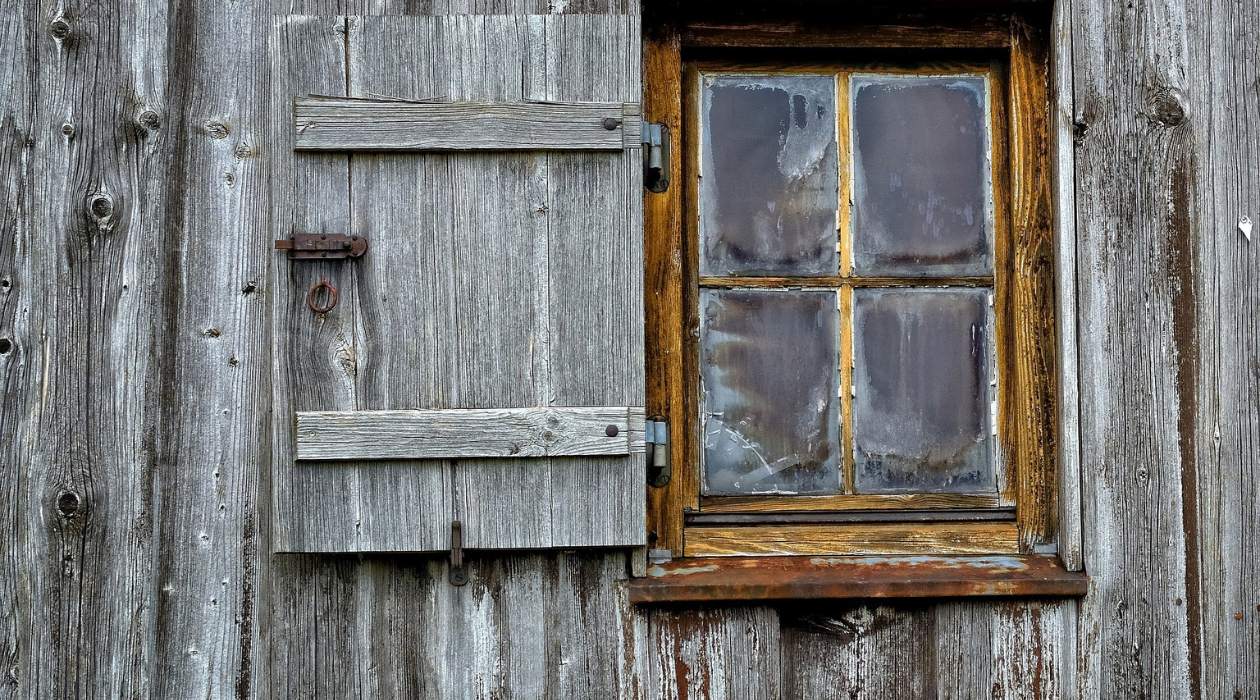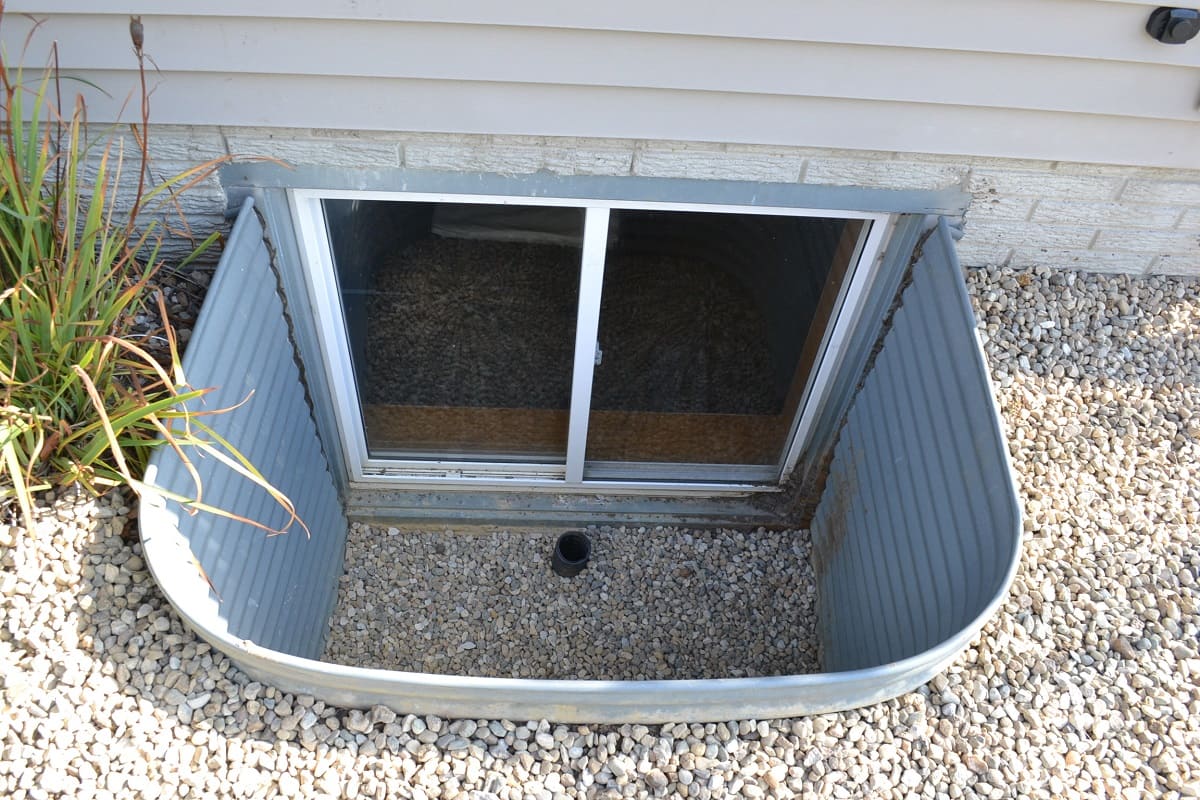

Articles
How To Install A Wood Window
Modified: January 19, 2024
Learn how to install a wood window with step-by-step instructions and expert tips. Read our informative articles for a hassle-free installation process.
(Many of the links in this article redirect to a specific reviewed product. Your purchase of these products through affiliate links helps to generate commission for Storables.com, at no extra cost. Learn more)
Introduction
Welcome to our comprehensive guide on how to install a wood window. Whether you’re renovating your home or building a new one, installing wood windows can enhance the aesthetics and add a touch of natural elegance to any space. However, the process requires careful planning, precise measurements, and the use of proper tools and materials. In this guide, we will walk you through each step, providing you with the necessary knowledge and tips to help you successfully install a wood window.
Before we delve into the details, it’s important to note that installing a wood window is not a task for beginners. If you are unsure of your skills or lack experience, it’s always a good idea to seek professional help. However, if you feel confident and adventurous, let’s get started!
In the following sections, we will discuss the tools and materials you’ll need, as well as provide step-by-step instructions on how to measure, prepare, remove and replace an existing window with a wood window. We will also cover how to properly apply moisture barrier and flashing, insulate and seal the window, and add finishing touches to ensure a professional-looking installation.
Installing a wood window is a rewarding project that can enhance your home’s value, energy efficiency, and overall appeal. So, grab your tools, put on your work gloves, and let’s begin the exciting journey of installing a wood window!
Key Takeaways:
- Installing a wood window requires careful preparation, precise measurements, and attention to detail. Prioritize safety, follow the step-by-step guide, and enjoy the rewarding process of enhancing your home’s aesthetics and energy efficiency.
- From measuring and preparing the window opening to adding finishing touches, the installation process demands patience and precision. Embrace the opportunity to showcase your DIY skills, and remember to prioritize regular maintenance for long-lasting performance.
Read more: How To Install Wood Siding
Tools and Materials Needed
Before you start the installation process, it’s important to gather all the necessary tools and materials. Here’s a list of what you’ll need:
Tools:
- Measuring tape
- Level
- Pry bar
- Screwdriver
- Drill
- Hammer
- Caulking gun
- Utility knife
- Chisel
- Putty knife
- Stapler
- Safety goggles
- Work gloves
Materials:
- Wood window
- Moisture barrier
- Flashing tape
- Shims
- Insulation foam
- Wood screws
- Exterior caulk
- Exterior trim
- Primer
- Paint
Make sure you have all the tools and materials readily available before you begin the installation process. This will help ensure a smooth and efficient workflow.
It’s also important to wear proper safety gear, such as safety goggles and work gloves, to protect yourself during the installation process. Additionally, if you’re working at heights or using power tools, take extra precautions to ensure your safety.
Now that you have all the necessary tools and materials, let’s move on to the next step: measuring and preparation.
Step 1: Measuring and Preparation
Before you begin replacing your window with a wood window, it’s crucial to take accurate measurements to ensure a proper fit. Here’s what you need to do:
Read more: How To Install A Window Box
1. Measure the Window Opening:
Using a measuring tape, carefully measure the height and width of the window opening. Take three measurements – one at the top, one in the middle, and one at the bottom. Record the smallest measurement as you’ll need it to determine the size of your wood window.
2. Check for Squareness:
Using a level, ensure that the window opening is square by measuring the diagonal corners. If the measurements are equal, the opening is square. If not, make note of the difference to adjust the positioning of the wood window later.
3. Remove the Interior Trim:
Carefully remove the interior trim around the existing window using a pry bar and a hammer. Be gentle to avoid damaging the surrounding wall.
4. Inspect the Framing:
Inspect the condition of the window frame and sill. Look for any signs of rot or damage. If there are any issues, repair or replace the framing as needed.
Read more: How To Install A Shed Window
5. Remove Window Hardware:
Remove any hardware, such as locks, latches, and operating mechanisms, from the existing window.
6. Clean and Prepare the Opening:
Thoroughly clean the window opening, removing any debris or old caulking. Ensure that the opening is dry and free of any loose material before proceeding.
Now that you’ve successfully measured the window opening and prepared the space, you’re ready to move on to the next step: removing the existing window.
Step 2: Removing the Existing Window
Now that you’ve measured the window opening and prepared the space, it’s time to remove the existing window. Follow these steps carefully:
1. Remove the Sash:
If your existing window has movable sashes, start by opening the window and removing the sash from the frame. Most sashes can be tilted inward and lifted out of the frame. Refer to the manufacturer’s instructions for your specific window type if needed.
Read more: How To Install A Bay Window
2. Remove the Window Frame:
Once the sash is removed, you’ll need to remove the window frame. Use a pry bar to gently pry the frame away from the window opening. Start at one corner and work your way around, being cautious not to damage the surrounding walls or frame.
3. Inspect for Damage:
As you remove the window frame, inspect the surrounding area for any signs of damage or rot. If you notice any issues, address them before proceeding with the installation of the new wood window.
4. Remove Any Remaining Hardware:
After removing the window frame, check for any remaining hardware such as screws or nails. Use a screwdriver or pliers to remove them, ensuring that the opening is clean and free of any obstacles.
5. Clean and Prepare the Opening:
Take the time to clean the window opening thoroughly, removing any debris or loose material. This step is important to ensure a proper installation and a secure fit for the new wood window.
Read more: How To Install Wood Ceiling Planks
6. Take Final Measurements:
Before proceeding to the next step, measure the window opening again to confirm the dimensions. Double-check the width, height, and depth of the opening to ensure accuracy.
With the existing window removed and the opening clean and prepared, you’re now ready to move on to the next step: preparing the window opening.
Step 3: Preparing the Window Opening
With the existing window removed, it’s time to prepare the window opening for the installation of the wood window. Follow these steps to ensure a proper fit:
1. Inspect the Window Opening:
Take a close look at the window opening to ensure it is clean, free of debris, and in good condition. Check for any signs of damage or rot that may need to be addressed before proceeding.
2. Apply Moisture Barrier:
Use a moisture barrier, such as a self-adhesive membrane or a liquid waterproofing product, to protect the window opening from moisture infiltration. Apply the barrier according to the manufacturer’s instructions, ensuring complete coverage.
Read more: How To Install Wood Floor On Concrete
3. Install Flashing:
Flashing is essential for preventing water from getting behind the wood window and causing damage. Install flashing tape or metal drip cap above the window opening, following the manufacturer’s guidelines for proper installation.
4. Create Support for the Window:
Depending on the specific requirements of your wood window and the construction of your home, you may need to create additional support for the window. This can involve installing sill pans, adding blocking, or reinforcing the framing as necessary.
5. Check for Level and Plumb:
Using a level, ensure that the sill is level and the sides of the window opening are plumb. Make any necessary adjustments by adding or removing shims to ensure a level and plumb installation.
6. Secure the Window Opening:
Secure the window opening by installing wood screws through the sides of the window opening and into the framing. This will provide stability and prevent the window from shifting during the installation process.
Once the window opening is prepared and secure, you’re ready to move on to the next step: applying moisture barrier and flashing.
Read more: How To Install Wood Patio Tiles
Step 4: Applying Moisture Barrier and Flashing
Applying moisture barrier and flashing is a crucial step in ensuring that your wood window is protected from water infiltration. Follow these steps to properly apply the necessary layers:
1. Start with the Moisture Barrier:
Apply a continuous layer of moisture barrier around the perimeter of the window opening. Ensure that the barrier extends beyond the edges of the opening to create a watertight seal. Use a caulk gun to apply the barrier in a consistent and even manner.
2. Overlap the Flashing:
Place the flashing tape or metal drip cap over the moisture barrier, overlapping the edges for maximum protection. Make sure the flashing extends over the top flashing, if present, and extends down the sides of the window opening.
3. Seal the Edges:
Use a putty knife or your fingers to press the edges of the flashing firmly against the surface, creating a secure bond. Pay extra attention to the corners and seams, ensuring that they are well-sealed to prevent any water penetration.
Read more: How To Install Basement Egress Window
4. Cut and Fold the Flashing:
If necessary, cut and fold the flashing to fit around the corners and angles of the window opening. Ensure that the flashing is smooth and tight against the surface, with no wrinkles or gaps that could compromise its effectiveness.
5. Inspect the Installation:
Thoroughly inspect the moisture barrier and flashing installation. Check for any air bubbles, gaps, or areas that may require additional sealing. Address any issues before proceeding to the next step.
6. Perform a Water Test:
To ensure the moisture barrier and flashing are effectively preventing water infiltration, perform a water test. Spray water onto the window and surrounding area, paying attention to the flashing and barrier. Check for any signs of water penetration or leaks.
Once you’ve successfully applied the moisture barrier and flashing, you’re ready to move on to the next step: installing the wood window.
Step 5: Installing the Window
Now that the window opening is prepared and protected with moisture barrier and flashing, it’s time to install your wood window. Follow these steps to ensure a secure and proper installation:
Read more: How To Install A Wood Fireplace Insert
1. Apply a Bead of Caulk:
On the bottom of the window opening, apply a bead of exterior caulk. This will create an additional barrier against water intrusion and improve the window’s energy efficiency.
2. Lift the Window Into Place:
Carefully lift the wood window into the prepared opening. Enlist the help of a partner if needed, as wood windows can be heavy and require careful handling. Ensure that the window is centered and aligned with the opening.
3. Insert Shims:
Insert shims along the sides of the window, between the window frame and the opening. Place shims at strategic locations to ensure the window is properly aligned and level. Use a level to check and adjust the position of the window as needed.
4. Secure the Window:
Using a drill, drive wood screws through the window frame and into the framing, securing the window in place. Place screws at designated locations provided by the window manufacturer, usually along the sides and top of the window.
Read more: How To Install Windows On A Brick House
5. Check for Smooth Operation:
Test the operation of the window, ensuring that it opens and closes smoothly. Make any necessary adjustments to the shims or screws to ensure proper alignment and smooth operation.
6. Trim and Finish:
Using a utility knife or a chisel, carefully trim away any excess shims or protruding shim ends. Fill any visible gaps between the window frame and the opening with foam insulation, ensuring a tight seal.
With the wood window securely installed, you’re ready to move on to the next step: insulating and sealing.
Step 6: Insulating and Sealing
Insulating and sealing the wood window is a crucial step in ensuring energy efficiency and preventing air and moisture infiltration. Follow these steps to properly insulate and seal your newly installed window:
1. Insulate the Gaps:
Using expanding foam insulation, fill the gaps between the window frame and the opening. Start at the bottom and work your way up, being careful not to overfill the gaps. This insulation will help to prevent drafts and improve energy efficiency.
Read more: How To Install Window AC Unit
2. Trim the Excess Insulation:
Once the foam insulation has dried and expanded, use a putty knife or utility knife to trim away any excess insulation that protrudes from the window frame. Be gentle to avoid damaging the surrounding materials.
3. Apply Exterior Caulk:
Using a caulk gun, apply a bead of exterior caulk around the perimeter of the window, where the window frame meets the siding or exterior trim. This will create a watertight seal and prevent water infiltration.
4. Smooth and Shape the Caulk:
Using a damp finger or a caulk finishing tool, smooth and shape the caulk to create a clean and professional finish. Pay extra attention to the corners and seams, ensuring a tight and uninterrupted seal.
5. Inspect for Any Gaps or Leaks:
Thoroughly inspect the window and surrounding areas for any remaining gaps or potential areas of air and moisture leakage. Address any issues by applying additional caulk or insulation as necessary.
Read more: How To Install Electric Windows In Car
6. Allow the Caulk to Cure:
Follow the manufacturer’s instructions for the caulk you used, allowing it sufficient time to cure and form a strong seal. Avoid opening or closing the window until the caulk has fully cured.
By properly insulating and sealing your wood window, you enhance its energy efficiency and ensure long-lasting performance. You’re now ready to move on to the final step: adding the finishing touches.
Step 7: Finishing Touches
Now that you have successfully installed and sealed your wood window, it’s time to add the finishing touches to complete the project. These final steps will enhance both the functionality and aesthetic appeal of your window installation:
1. Install Exterior Trim:
Add exterior trim around the perimeter of the window to provide a finished look and protect the edges of the window. Use a saw to cut the trim to the appropriate length and attach it securely to the siding or wall using nails or screws.
2. Prime and Paint:
If your wood window is unfinished or requires a fresh coat of paint, apply a primer to the entire surface. Once the primer is dry, apply your chosen paint color to match your home’s exterior. Ensure all surfaces are evenly covered and allow the paint to cure according to the manufacturer’s recommendations.
Read more: How To Install Stained Glass Window
3. Clean Up the Work Area:
Thoroughly clean up the work area, removing any debris, tools, and materials. Dispose of waste responsibly and leave the area tidy and organized.
4. Test the Window Operation:
After the paint has dried, test the window’s operation to ensure it opens, closes, and locks smoothly. Check for any issues and make any necessary adjustments or repairs.
5. Enjoy Your Newly Installed Wood Window:
Step back and admire your handiwork. Your wood window is now securely installed, sealed, painted, and ready to enhance the beauty and functionality of your home. Enjoy the natural warmth and charm that wood windows bring to your living space.
Remember, proper maintenance and regular inspections are key to preserving the longevity and performance of your wood window. Regularly inspect the caulk and sealants for any signs of wear or cracking, and address any issues promptly to ensure the continued efficiency and aesthetics of your window.
Congratulations on successfully installing your wood window! You can now sit back, relax, and enjoy the benefits of your well-executed home improvement project.
Conclusion
Installing a wood window can be a rewarding project that not only adds charm and elegance to your home but also improves energy efficiency and functionality. By following the step-by-step guide provided in this article, you’ve learned how to measure and prepare the window opening, remove the existing window, and properly apply moisture barrier and flashing. You’ve also learned how to install the wood window, insulate and seal it, and add the finishing touches to complete the project.
Throughout the installation process, it’s important to prioritize safety and precision. Use the appropriate tools and materials, wear protective gear, and take your time to ensure a meticulous and secure installation. If at any point you feel unsure or uncomfortable with the task, it’s always advisable to seek professional assistance.
Remember to regularly inspect and maintain your wood window to ensure its longevity and optimal performance. Keep an eye out for any signs of damage or wear, promptly address any issues, and perform routine maintenance as needed.
Installing a wood window is not only a practical home improvement but also an opportunity to showcase your DIY skills and creativity. Embrace the process, make it your own, and enjoy the satisfaction of a successful installation.
We hope that this comprehensive guide has provided you with the knowledge and confidence to install a wood window in your home. By following the steps outlined in this article, you’re well-equipped to embark on your window installation journey. Enjoy the beauty and benefits of your newly installed wood window!
Frequently Asked Questions about How To Install A Wood Window
Was this page helpful?
At Storables.com, we guarantee accurate and reliable information. Our content, validated by Expert Board Contributors, is crafted following stringent Editorial Policies. We're committed to providing you with well-researched, expert-backed insights for all your informational needs.




0 thoughts on “How To Install A Wood Window”